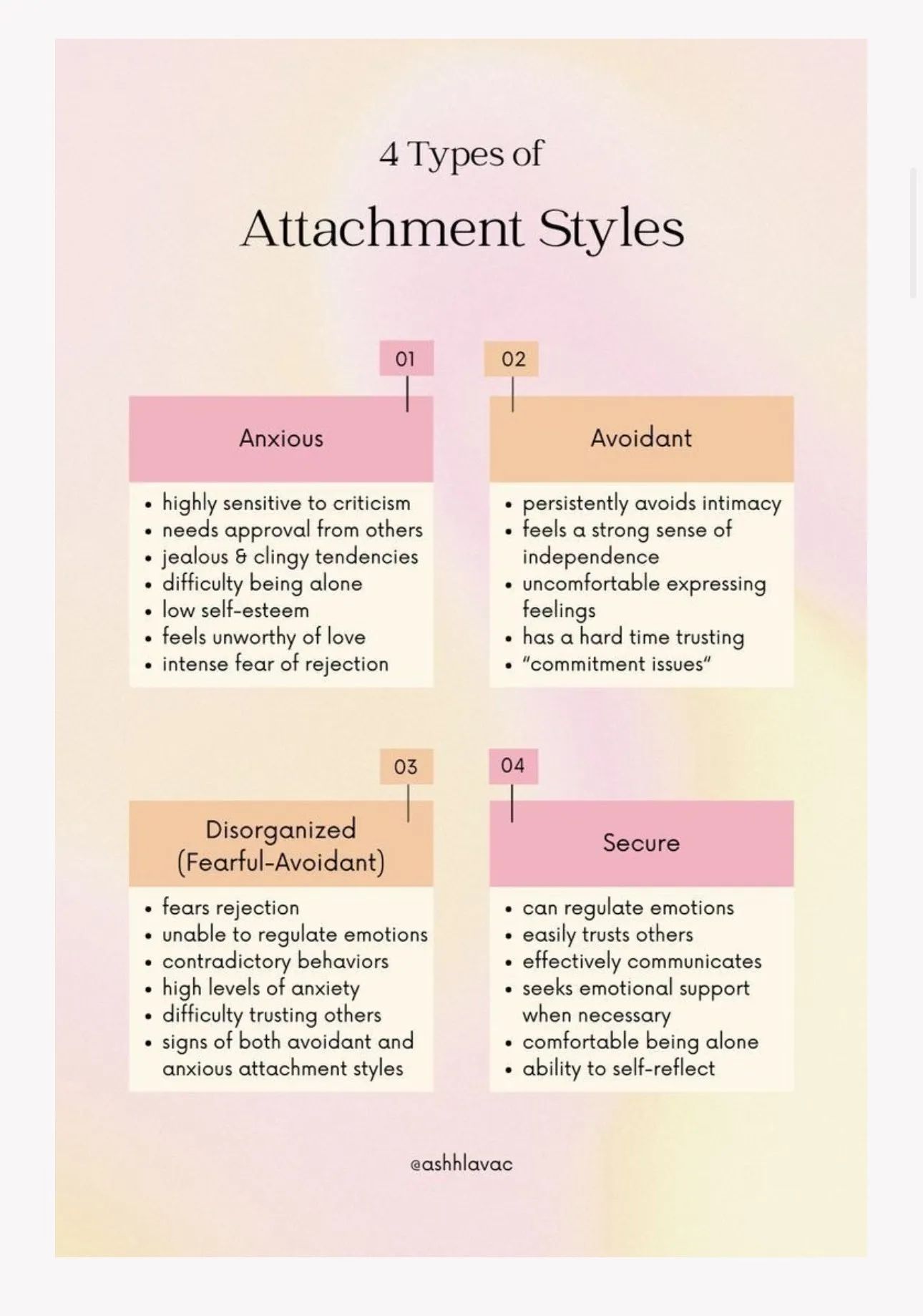It's All About Attachment
Dr. Chris Stroble / Published April 24, 2025
Why do I feel insecure in my relationships? Why do I have a hard time trusting? Why do I need constant reassurance? Why do I worry and fear being abandoned? It's all about attachment.
Attachment refers to the emotional bond a child forms with their primary caregiver in childhood, in most cases our mother. This emotional bond/connection is a child's first relationship, and they feel secure or insecure.
When their emotional needs are met, they feel secure. They feel safe and learn to trust. As a result, they form a secure attachment. When their emotional needs are not met, they learn mistrust. They learn the world is not safe. They are unsure and ambivalent if their needs will be met. They are insecure, and they form an insecure attachment.
The style of attachment you form in childhood has a significant impact on your future relationships in life. If you developed an insecure attachment in your first relationship, patterns of that insecurity are likely showing up in your relationships now.
There are three types of insecure attachments: avoidant, ambivalent, and disorganized. Very Well Mind in an article, Coping With an Insecure Attachment Style (Whether it’s avoidant, anxious, or disorganized), offers an overview of each style and how your attachment style shows up in future relationships.
Patterns of Insecurity
If a person develops an insecure style of attachment, it can take one of three forms: avoidant, anxious/ambivalent, and disorganized.
• Avoidant. People who develop an avoidant attachment style often have a dismissive attitude, shun intimacy, and have difficulties reaching for others in times of need.
• Anxious/Ambivalent. People with an ambivalent attachment pattern are often anxious and preoccupied. They can be viewed by others as "clingy" or "needy" because they require constant validation and reassurance.
• Disorganized. People with a disorganized attachment style typically experienced childhood trauma or extreme inconsistency growing up. Disorganized attachment is not a mixture of avoidant and ambivalent attachments; rather, a person has no real coping strategies and is unable to deal with the world.

Signs of Insecure Attachment
People with an insecure attachment style generally have trouble connecting emotionally. They can be aggressive or unpredictable toward their loved ones—a behavior rooted in the lack of consistent love and affection they experienced in childhood.
Each form of insecure attachment is characterized by its own behaviors and patterns of behavior in relationships.
Avoidant Attachment
People with an avoidant attachment style tend to:
• Fear and avoid commitment
• Avoid making friends
• Struggle to accept criticism
• Don't like to show emotions
• Accuse their partners of being to clingy or needy
• Dislike touch or physical closeness
• Prefer to be alone when they are stressed or upset
• Don't invest in relationships and prefer to remain independent
Anxious / Ambivalent Attachment
Signs of an ambivalent attachment style include:
• Craving close relationships but feeling unable to trust others
• Becoming overly focused on romantic partners and losing sight of another important aspect of life
• Problems recognizing and honoring boundaries
• Feeling jealous or anxious when separated from your partner
• Using guilt trips or other manipulative tactics to control your partner
• Seek constant reassurance from your partner
Disorganized Attachment
Signs of disorganized attachment include:
• Depression and anxiety
• Frequent outbursts and erratic behaviors stemming from the inability to clearly see and understand the world around them or properly process the behavior of others or relationships
• Poor self-image and self-hatred
• The perpetuation of trauma in relationships, especially related to parenthood (for example, struggling to form healthy attachments with their own children, which perpetuates a cycle of dysfunctional attachment)
________
So, why do you feel insecure in your relationships? Why do you have a hard time trusting? Why do you need constant reassurance? Why do you worry and fear being abandoned? It’s all about attachment.
It's about the style of attachment you formed in your first relationship with your primary caretaker (in most cases our mother).
As an adult, you may ask, “Can I change my attachment style?” The Cleveland Clinic in an article Attachment Styles, notes you absolutely can! It all starts with self-awareness. Once you recognize your emotional tendencies—and existing patterns in your adult relationships—you can “flip the script,” so to speak.
Reading this blog you have just raised your awareness. To continue learning about attachment styles, so you can "flip the script," read the entire article from Very Well Mind, Coping with an Insecure Attachment Style (Whether it’s avoidant, anxious, or disorganized). Another great resource is this 7-minute video that has 10M views- The Attachment Theory: How Childhood Affects Life.
Always in your corner,
Dr. Chris
